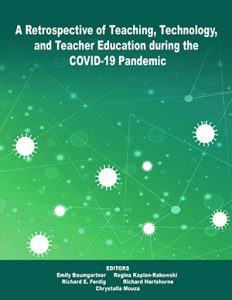 Researchers have discovered a mutation in the SARS-CoV-2 spike protein that enhances its ability to infect the central nervous system, potentially explaining neurological symptoms and “long COVID.” The mutation was found to allow the virus to better infiltrate the brain, with implications for future treatments targeting COVID-19’s effects on the brain. The findings highlight the need for specific therapies to address these neurological complications.
Researchers have discovered a mutation in the SARS-CoV-2 spike protein that enhances its ability to infect the central nervous system, potentially explaining neurological symptoms and “long COVID.” The mutation was found to allow the virus to better infiltrate the brain, with implications for future treatments targeting COVID-19’s effects on the brain. The findings highlight the need for specific therapies to address these neurological complications. Reading view
COVID’s Spike Protein Enhances Ability to Infect Brain
 Researchers have discovered a mutation in the SARS-CoV-2 spike protein that enhances its ability to infect the central nervous system, potentially explaining neurological symptoms and “long COVID.” The mutation was found to allow the virus to better infiltrate the brain, with implications for future treatments targeting COVID-19’s effects on the brain. The findings highlight the need for specific therapies to address these neurological complications.
Researchers have discovered a mutation in the SARS-CoV-2 spike protein that enhances its ability to infect the central nervous system, potentially explaining neurological symptoms and “long COVID.” The mutation was found to allow the virus to better infiltrate the brain, with implications for future treatments targeting COVID-19’s effects on the brain. The findings highlight the need for specific therapies to address these neurological complications. Long COVID Linked to Brain Inflammation and Low Cortisol
 A study finds that COVID-19 proteins left in the brain may lower cortisol levels, leading to heightened inflammation and an exaggerated response to stressors. This discovery could explain the persistent neurological symptoms seen in Long COVID patients. Researchers suggest that managing stressors and investigating viral reservoirs might help alleviate these symptoms.
A study finds that COVID-19 proteins left in the brain may lower cortisol levels, leading to heightened inflammation and an exaggerated response to stressors. This discovery could explain the persistent neurological symptoms seen in Long COVID patients. Researchers suggest that managing stressors and investigating viral reservoirs might help alleviate these symptoms. Moving beyond folk pedagogies towards hybrid and blended practices
 This chapter follows on, and builds upon, our 2020 JTATE article in which we proposed using Bruner’s (1996) frame of folk pedagogies to consider pedagogical approaches suited to synchronous digital online learning in pre-service teacher education in COVID-19 times.
This chapter follows on, and builds upon, our 2020 JTATE article in which we proposed using Bruner’s (1996) frame of folk pedagogies to consider pedagogical approaches suited to synchronous digital online learning in pre-service teacher education in COVID-19 times.
In this chapter we revisit and add to Bruner’s folk pedagogical frame, pointing to implications for practice, including the need to design for learning that considers the nature of delivery with and through technologies. Through an autoethnographic exploration of our use of pedagogies in emerging hybrid learning environments within teacher education programs in 2022, we emphasize the use of asynchronous resources with synchronous learning and the facilitation of student agency..
____________________
Citation:
Creely, E., Henriksen, D., & Henderson, M. (2022). Moving beyond folk pedagogies towards hybrid and blended practices: A reflection on teacher education post-pandemic. In E. Baumgartner, R. Kaplan-Rakowski, R.E. Ferdig, R. Hartshorne, & C. Mouza (Edits.), A Retrospective of teaching, technology, and teacher education during the COVID-19 pandemic (pp. 31-38). Association for the Advancement of Computing in Education (AACE). https://www.learntechlib.org/
